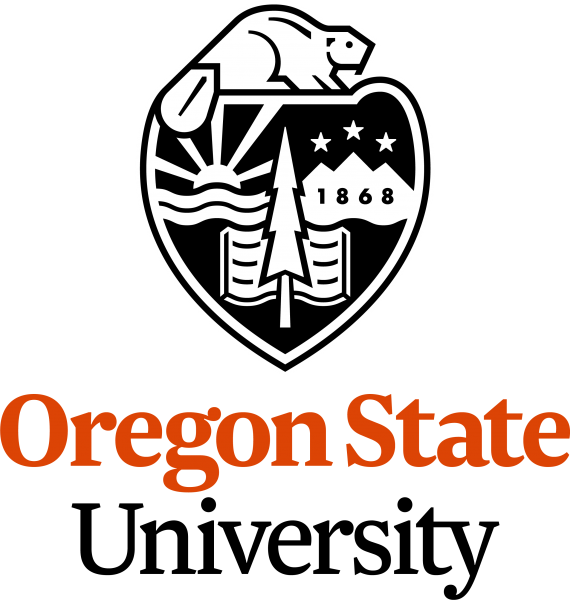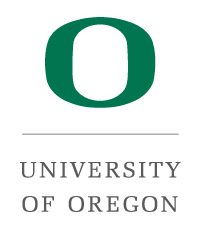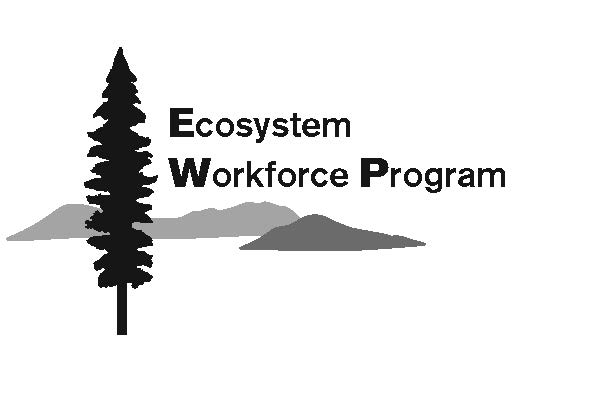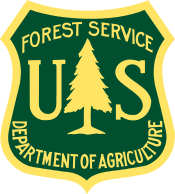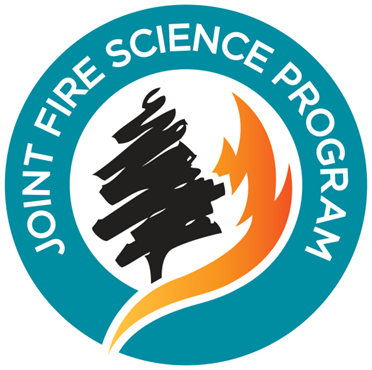Partner Feeds
Cedar Creek, Varden, and Delancy Fires CO:06-16-04-21-39 effective 10-08-21 (Cedar Creek Wildfire)
Cub Creek 2 Fire Closure Order: 06-17-04-21-40 effective as of 10-08-2021 (Cub Creek 2 Fire Wildfire)
Cleaning up Micro-Trash: National Public Lands Day at Dougan Falls
Volunteers gathered early in the morning on Saturday, Sept. 25, as part of a joint DNR and Keep Nature Wild cleanup at Dougan Falls in Washougal, close to DNR’s Dougan Creek Campground and the Yacolt Burn State Forest.
“Dougan Falls is one of our very, very popular sites in the Pacific Cascade Region, with people going down by the waterfalls,” Pacific Cascade Region Recreation Manager Sharon Steriti said. “But, as DNR, we can’t maintain it all ourselves.”
Dougan Falls in Washougal, Washington.The assembled group cleaned up trash of all sizes, ranging from cigarette butts to shoes, diapers and bottles.
When Keep Nature Wild, an outdoor clothing brand that cleans up two pounds of trash for every item purchased, reached out to DNR to set up a cleanup, Steriti could not have been more excited to welcome the help.
“I thought it was a really good opportunity to incorporate another partnership, get some people out here, and focus on picking up some of the micro-trash that people leave,” Steriti said.
Two volunteers and their dog cleaning up trailside trash.Micro-trash refers to small pieces of garbage that enter the environment, such as cigarette butts, bottle caps, broken glass and other small pieces of plastic. While one piece may not seem to do much, micro-trash can have significant environmental impact when it accumulates.
Steriti explained that while most people don’t mean to litter, trash that enters the Washougal River can work its way into the Columbia River, and then the ocean and the fish we eat. When you help pick up micro-trash, you can help prevent this from happening.
Pacific Cascade Region Recreation Manager Sharon Steriti showcasing DNR’s heavy-duty trash bags.“DNR benefits from the efforts of volunteers in many ways. They help out with our forest watch program, are our eyes and ears out in our forests, and also help out in recreation. It’s essential to have the public involved because they and many other groups across the state help us maintain many of our recreation areas,” Steriti said.
In addition to helping keep Washington’s trust lands clean, volunteers can also earn a complimentary Discover Pass through their volunteer efforts. Once a volunteer accrues 24 hours or more of volunteer time on certain projects managed by DNR, State Parks or WDFW in a 12-month period, they can earn a complimentary Discover Pass. Click here to learn more.
During the event, volunteers helped clean up 200 pounds of trash in total. To learn more about volunteer opportunities with DNR, visit dnr.wa.gov/volunteer.
Cleaning up Micro-Trash: National Public Lands Day at Dougan Falls
Volunteers gathered early in the morning on Saturday, Sept. 25, as part of a joint DNR and Keep Nature Wild cleanup at Dougan Falls in Washougal, close to DNR’s Dougan Creek Campground and the Yacolt Burn State Forest.
“Dougan Falls is one of our very, very popular sites in the Pacific Cascade Region, with people going down by the waterfalls,” Pacific Cascade Region Recreation Manager Sharon Steriti said. “But, as DNR, we can’t maintain it all ourselves.”
Dougan Falls in Washougal, Washington.The assembled group cleaned up trash of all sizes, ranging from cigarette butts to shoes, diapers and bottles.
When Keep Nature Wild, an outdoor clothing brand that cleans up two pounds of trash for every item purchased, reached out to DNR to set up a cleanup, Steriti could not have been more excited to welcome the help.
“I thought it was a really good opportunity to incorporate another partnership, get some people out here, and focus on picking up some of the micro-trash that people leave,” Steriti said.
Two volunteers and their dog cleaning up trailside trash.Micro-trash refers to small pieces of garbage that enter the environment, such as cigarette butts, bottle caps, broken glass and other small pieces of plastic. While one piece may not seem to do much, micro-trash can have significant environmental impact when it accumulates.
Steriti explained that while most people don’t mean to litter, trash that enters the Washougal River can work its way into the Columbia River, and then the ocean and the fish we eat. When you help pick up micro-trash, you can help prevent this from happening.
Pacific Cascade Region Recreation Manager Sharon Steriti showcasing DNR’s heavy-duty trash bags.“DNR benefits from the efforts of volunteers in many ways. They help out with our forest watch program, are our eyes and ears out in our forests, and also help out in recreation. It’s essential to have the public involved because they and many other groups across the state help us maintain many of our recreation areas,” Steriti said.
In addition to helping keep Washington’s trust lands clean, volunteers can also earn a complimentary Discover Pass through their volunteer efforts. Once a volunteer accrues 24 hours or more of volunteer time on certain projects managed by DNR, State Parks or WDFW in a 12-month period, they can earn a complimentary Discover Pass. Click here to learn more.
During the event, volunteers helped clean up 200 pounds of trash in total. To learn more about volunteer opportunities with DNR, visit dnr.wa.gov/volunteer.
Rough Patch Complex and Jack Fire Daily Fact Sheet Oct. 8, 2021 (Jack Fire Wildfire)
Rough Patch Complex and Jack Fire Daily Fact Sheet Oct. 8, 2021 (Rough Patch Wildfire)
Volunteers Take to Olympic Peninsula Forests to Help Further DNR Research
Volunteers set off through the Olympic Experimental State Forest in Jefferson County as part an Earthwatch Institute group aiding Washington State Department of Natural Resources staff in forestry research.
The old-growth western hemlocks tower over a hillside in the Olympic Experimental State Forest southeast of Forks. There’s not a cloud in the sky on the beautiful summer day – not that you would be able to see one through the lush, green canopy anyway.
Gingerly descending the steep hillside, a group of 10 citizen scientists follows the footsteps of DNR forest ecologist Daniel Donato toward a research plot.
There, they will spend the day assessing the habitat characteristics of this patch of forest as part of an ongoing experiment to determine how land management affects wildlife use in working forests.
From sociologists to software engineers, from schoolkids to senior citizens, these citizen scientists were just some of the nearly 50 people who got to explore the OESF and assist DNR scientists conducting research this summer through the environmental nonprofit Earthwatch.
Among the nearly 50 research volunteers who aided DNR this summer were a group of high school students from New York.
Evan Williams made the trek to the Olympic Peninsula from Lawrence, Kansas, seeing the weeklong experience as both an opportunity to meet new people and to get outdoors. She was initially nervous about meeting the physical requirements – clambering over downed logs, climbing down hillsides, navigating through the thick rainforest undergrowth – but she realized she could keep up and quickly came to appreciate both what she was learning and the company of the other volunteers.
“I’m learning everything from flora and fauna to history – it’s fascinating,” she said. “There’s nothing like this where I’m from and I’ve never been to this part of the nation. It’s fabulous.”
That learning opportunity is one of the most important things that OESF Research and Monitoring Manager Teodora Minkova set out to provide to the Earthwatch volunteers. Minkova, the co-principal investigator of the experiment with Donato, said she saw an opportunity to expose people to the importance of sustainable forestry – “forest management with a clear objective of environmental wellbeing and human wellbeing.”
An acoustic monitoring device sits strapped to the broken-off stump of a rotting tree.
The experiment – which uses the activity of different birds to measure how habitat quality, diversity, and function change after different types of forest management – is a part of the 20,000-acre T3 Watershed Experiment in the OESF that DNR and University of Washington researchers are undertaking to examine new methods for sustainable forestry.
“Forestry isn’t about cutting every tree and leaving a moonscape, and it is not about leaving every tree. There are many ways to manage a forest, and many people do not know that there is a middle ground,” Minkova said. “I wanted to show people that DNR is doing an array of activities just in our standard forest management practices – and we’re experimenting with even more novel ideas.”
A volunteer measures the diameter of a downed tree as part of DNR’s research measuring habitat use in the Olympic Experimental State Forest.
The volunteers took on several tasks in the field throughout the summer, performing habitat surveys to measure forest characteristics such as tree diameter and ground cover, as well as installing and retrieving audio recording units that allow researchers to determine what birds used the forest when people were not present.
The immersive experience went beyond the days of fieldwork, with staff and guest lecturers from the Makah Tribe and the University of Washington educating the volunteers about how forestry and ecology fit within the human geography of the Olympic Peninsula.
For Rohit Kothur of New York, he was drawn to Earthwatch after reading about the nonprofit in a memoir a friend had given him for Christmas.
Rohit Kothur came from New York to participate in the weeklong volunteer experience in the Olympic Experimental State Forest.
“In one of the chapters, she described an Earthwatch project she did in Australia where she was basically tracking emus and I thought that sounded awesome, so I found the organization, looked around for projects, and this was the coolest one that I saw that was available,” he said.
Kothur quickly took to learning about the experiment and appreciated the guidance of Donato and field supervisors Lauren Kuehne and Laura Giannone. But spending a week in and around Forks also afforded the Queens resident an in-depth opportunity to learn about the contentious legacy of forestry and conservation throughout the Pacific Northwest.
“I actually didn’t know anything about any of the timber wars stuff – it was kind of before my time – so coming out here and learning about all this stuff and how it affected the people around here and the people’s attitudes toward preservationists and the owl and the preservationists’ attitude toward the logging industry, it’s super fascinating,” Kothur said. “It’s just really cool just seeing this side of the country, this very small – I mean, it’s not small, it’s huge – this huge part of the culture that I wasn’t exposed to before.”
Where Kothur had a surprise sociology lesson, Irene Fiala volunteered so that she could learn about things outside the field. The Ashtabula, Ohio, resident is a sociology professor when she’s not traveling the world, and she, too, had never been to the Olympic Peninsula.
“This is like heaven,” Fiala said.
For Fiala, the weeklong expedition was a “really enlightening experience” – in part from the diverse group of participants being brought together through common interests, and also because of the opportunity to help science better the world around us.
“I teach a course called ‘Animals and Society.’ We focus on the animal side of it and we talk a little bit about conservation versus preservation, but to actually be here and to see how the forests are being managed and what kind of research is going on has for me both professionally and personally been something I find very valuable,” Fiala said.
A pair of volunteers measure the diameter of a large western redcedar.
For many of the volunteers, the experiment was an opportunity to explore a part of the world they had never visited before, even if it meant the occasional slog across hills thick with head-high hemlock understories.
But for Jeannette Franks, the Olympic rainforests have been a part of her life forever.
The Bainbridge Island resident has volunteered with Earthwatch regularly since 1996, the first time as a present to celebrate the completion of her doctoral degree. But this tour provided her with a unique opportunity to learn more about how the public lands in her own backyard are managed.
“I’ve been all over the world doing Earthwatch or other service projects, and this was the first time it was really in my neighborhood – it was like, ‘Yes, of course I’ll do that,’” Franks said. “I didn’t have to get on an airplane during COVID, which was also a bonus, and I love the Olympic rainforests, which I’ve been coming to since I was a child, so it just seemed like a good combination of components.”
The gratification that the volunteers found in the Olympic Experimental State Forest is one Minkova shared in organizing the experience – one of the few Earthwatch projects able to operate during the COVID-19 pandemic – and she specifically noted the volunteers’ generosity, determination, curiosity, and passion for a common cause in donating nearly 1,800 hours of their time.
“It was challenging – it was a lot of work for the project staff,” Minkova said. “However, it turned out to be quite rewarding seeing the lightbulbs that go off with the volunteers as they go through the forest and learn what we do and why.”
Volunteers Take to Olympic Peninsula Forests to Help Further DNR Research
There, they will spend the day assessing the habitat characteristics of this patch of forest as part of an ongoing experiment to determine how land management affects wildlife use in working forests.
From sociologists to software engineers, from schoolkids to senior citizens, these citizen scientists were just some of the nearly 50 people who got to explore the OESF and assist DNR scientists conducting research this summer through the environmental nonprofit Earthwatch.
Among the nearly 50 research volunteers who aided DNR this summer were a group of high school students from New York.Evan Williams made the trek to the Olympic Peninsula from Lawrence, Kansas, seeing the weeklong experience as both an opportunity to meet new people and to get outdoors. She was initially nervous about meeting the physical requirements – clambering over downed logs, climbing down hillsides, navigating through the thick rainforest undergrowth – but she realized she could keep up and quickly came to appreciate both what she was learning and the company of the other volunteers.
“I’m learning everything from flora and fauna to history – it’s fascinating,” she said. “There’s nothing like this where I’m from and I’ve never been to this part of the nation. It’s fabulous.”
That learning opportunity is one of the most important things that OESF Research and Monitoring Manager Teodora Minkova set out to provide to the Earthwatch volunteers. Minkova, the co-principal investigator of the experiment with Donato, said she saw an opportunity to expose people to the importance of sustainable forestry – “forest management with a clear objective of environmental wellbeing and human wellbeing.”
An acoustic monitoring device sits strapped to the broken-off stump of a rotting tree.The experiment – which uses the activity of different birds to measure how habitat quality, diversity, and function change after different types of forest management – is a part of the 20,000-acre T3 Watershed Experiment in the OESF that DNR and University of Washington researchers are undertaking to examine new methods for sustainable forestry.
“Forestry isn’t about cutting every tree and leaving a moonscape, and it is not about leaving every tree. There are many ways to manage a forest, and many people do not know that there is a middle ground,” Minkova said. “I wanted to show people that DNR is doing an array of activities just in our standard forest management practices – and we’re experimenting with even more novel ideas.”
A volunteer measures the diameter of a downed tree as part of DNR’s research measuring habitat use in the Olympic Experimental State Forest.The volunteers took on several tasks in the field throughout the summer, performing habitat surveys to measure forest characteristics such as tree diameter and ground cover, as well as installing and retrieving audio recording units that allow researchers to determine what birds used the forest when people were not present.
The immersive experience went beyond the days of fieldwork, with staff and guest lecturers from the Makah Tribe and the University of Washington educating the volunteers about how forestry and ecology fit within the human geography of the Olympic Peninsula.
For Rohit Kothur of New York, he was drawn to Earthwatch after reading about the nonprofit in a memoir a friend had given him for Christmas.
Rohit Kothur came from New York to participate in the weeklong volunteer experience in the Olympic Experimental State Forest.“In one of the chapters, she described an Earthwatch project she did in Australia where she was basically tracking emus and I thought that sounded awesome, so I found the organization, looked around for projects, and this was the coolest one that I saw that was available,” he said.
Kothur quickly took to learning about the experiment and appreciated the guidance of Donato and field supervisors Lauren Kuehne and Laura Giannone. But spending a week in and around Forks also afforded the Queens resident an in-depth opportunity to learn about the contentious legacy of forestry and conservation throughout the Pacific Northwest.
“I actually didn’t know anything about any of the timber wars stuff – it was kind of before my time – so coming out here and learning about all this stuff and how it affected the people around here and the people’s attitudes toward preservationists and the owl and the preservationists’ attitude toward the logging industry, it’s super fascinating,” Kothur said. “It’s just really cool just seeing this side of the country, this very small – I mean, it’s not small, it’s huge – this huge part of the culture that I wasn’t exposed to before.”
Where Kothur had a surprise sociology lesson, Irene Fiala volunteered so that she could learn about things outside the field. The Ashtabula, Ohio, resident is a sociology professor when she’s not traveling the world, and she, too, had never been to the Olympic Peninsula.
“This is like heaven,” Fiala said.
For Fiala, the weeklong expedition was a “really enlightening experience” – in part from the diverse group of participants being brought together through common interests, and also because of the opportunity to help science better the world around us.
“I teach a course called ‘Animals and Society.’ We focus on the animal side of it and we talk a little bit about conservation versus preservation, but to actually be here and to see how the forests are being managed and what kind of research is going on has for me both professionally and personally been something I find very valuable,” Fiala said.
A pair of volunteers measure the diameter of a large western redcedar.For many of the volunteers, the experiment was an opportunity to explore a part of the world they had never visited before, even if it meant the occasional slog across hills thick with head-high hemlock understories.
But for Jeannette Franks, the Olympic rainforests have been a part of her life forever.
The Bainbridge Island resident has volunteered with Earthwatch regularly since 1996, the first time as a present to celebrate the completion of her doctoral degree. But this tour provided her with a unique opportunity to learn more about how the public lands in her own backyard are managed.
“I’ve been all over the world doing Earthwatch or other service projects, and this was the first time it was really in my neighborhood – it was like, ‘Yes, of course I’ll do that,’” Franks said. “I didn’t have to get on an airplane during COVID, which was also a bonus, and I love the Olympic rainforests, which I’ve been coming to since I was a child, so it just seemed like a good combination of components.”
The gratification that the volunteers found in the Olympic Experimental State Forest is one Minkova shared in organizing the experience – one of the few Earthwatch projects able to operate during the COVID-19 pandemic – and she specifically noted the volunteers’ generosity, determination, curiosity, and passion for a common cause in donating nearly 1,800 hours of their time.
“It was challenging – it was a lot of work for the project staff,” Minkova said. “However, it turned out to be quite rewarding seeing the lightbulbs that go off with the volunteers as they go through the forest and learn what we do and why.”
